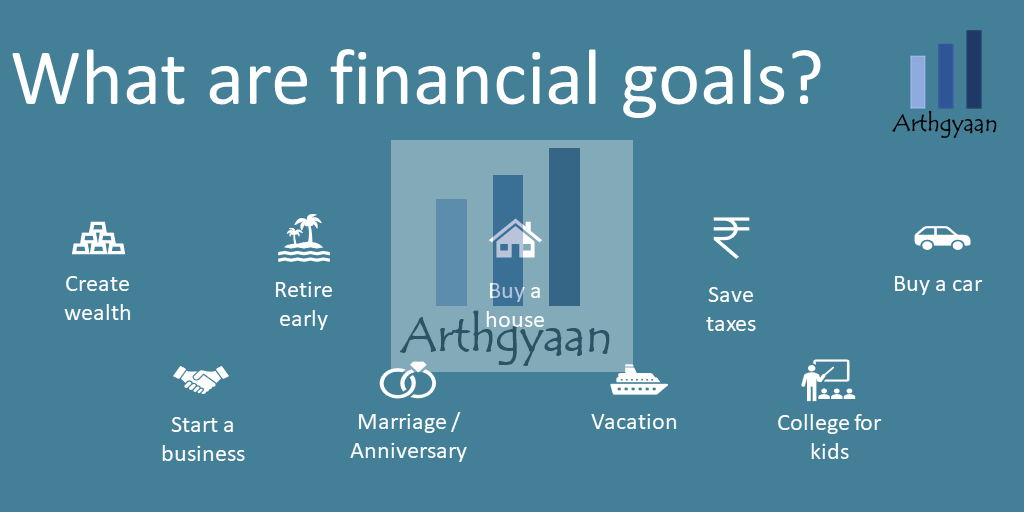What should your financial life look like at different life-stages?
At various life-stages your finances, assets, income and investments will vary. Here is an overview
At various life-stages your finances, assets, income and investments will vary. Here is an overview

The life-stage theory of investments is a very common way of looking at the financial life of every investor based on age, marital status, income, and assets owned. At every stage, financial goals change requiring a revisit of the current financial plan. If you want an alternative view using the amount of wealth accumulated so far, have a look at this post: How to climb the wealth ladder in India?
Apart from these you should also work out a:
The age bands are indicative and are not set in stone. Additionally, the path below (career, family, marriage and children) is an example and is not supposed to be recommended for following to the letter.
This is how you start: here.
This is the typical early investor who has just completed education and started work. This is the time for figuring out some complex things: setting up a working life, living by themselves, juggling work and leisure. At this stage, there is not a lot to do except saving a lot of cash for the emergency fund and sinking fund. This is the time to start exploring term life and health insurance. A credit card at this stage should be avoided to keep credit card debt far away. The focus now is to build a strong financial base, avoid unnecessary debt and learn both skills for career and personal finance.
This stage builds on the base of the previous stage and targets an adequate emergency fund, tackles the budget via a sinking fund, and adds a health insurance policy for self. Taking this policy now reduces the risk of future health insurance being denied or premiums hiked due to pre-existing diseases. This will be a good time to take a life insurance policy of 15-20x CTC. The emergency fund should be hiked to 6x expenses and every effort must be made to pay off all credit cards and personal loans.

The focus at this stage will be to formulate investment goals and start investing for goals via a proper investment plan. The asset mix should be aggressive based on the long time horizon of most goals. It is very easy to delay investments at this stage (which has a very high cost) or have the wrong (debt-heavy) portfolio. You should create a formal investment policy statement (IPS) for implementing goal-based investing. Investment tracking, rebalancing as per the glide-path will be implemented via the IPS.
This is a stage of changing life situation mostly due to marriage. A key point to be considered is that the financial goals are of both spouses are aligned in terms of children’s education, asset accumulation (like house purchase) and career progression (early retirement and related). Goals should be suitably modified and asset allocation fixed.
A personal accident insurance coverage should be considered to safeguard against accidents where you do not die but cannot earn.
High discretionary expenses at this stage (vehicle, travel, entertainment, white goods) will require a well-funded sinking fund and avoidance of credit card debt. However, a credit card is a good way to build a credit history (for future loans) and a low limit card taken against FD will be a simple way to build credit history without having a tendency to accumulate a large balance. A trick that can be used is to charge Netflix and postpaid mobile bill to the credit card and then set an auto-pay in the issuing bank’s app to pay it off.
House purchase is the most important expenditure at this (or the next) stage and adequate care must be taken that the down-payment, EMI and ongoing related expenses do not jeopardize investments for future financial goals. Investments should be aggressive at this stage to ensure asset allocation is maintained.
The insurance scenario should be tweaked:
Financial goals at this stage should be updated to include children’s education if applicable. The housing loan should be carefully handled along with the rest of the goals with proper prioritization: being debt-free vs. goal prioritization(for example educational goal vs. retirement).
This is a good time to take the salary income as a base or source of funding to cultivate secondary or passive sources of income to avoid redundancy risk. There should be a family discussion if Financial Independence and/or Retiring Early (FIRE)is a goal that should be considered. This is a calculator that can be used to check if FIRE is feasible based on current assets owned. If not, you need to focus on your sustainable savings rate that will get you to FIRE as soon as you can. Skill enhancement for career progression should be pursued diligently. This time should also be used to create a will and consolidate and share all financial documents with family.
At this stage, salary growth will mostly stabilize however redundancy will be a high-likelihood risk that should be mitigated by having a secondary income, FIRE planning and skill enhancement. This will be a good time to consider how to deal with the housing loan - keep or pre-pay based on the income situation of the next few years. There will be a lot of emphasis on children’s educational expenses due to better visibility on the type of college, course and location.
This stage will see a big impact of compounding on the portfolio. Due to the increasing size of the portfolio, it is very important to manage risk via rebalancing frequently as per the plan. Any existing home loan should be paid off.
This is the end stage of the career with the highest withdrawal (college education of children) but will also witness the highest income and portfolio values. Asset allocation at this stage should be slowly adjusted towards the one suitable for retirement.
Entering retirement is a big life change. Good financial habits set up in the last 2-3 decades will give the rewards at this stage by lowering stress regarding finances. The goal here is to have enough money every month for living expenses, healthcare, travel, gifting and entertainment. This is the same as pre-retirement life with the important distinction being not having a regular source of income from salary or profession.
These are the big sources of risk in retirement:
For retirement, this calculator will show how long the corpus will last based on the expenses. You can consider if a pension plan is needed as well.

Published: 23 December 2025
6 MIN READ

Published: 18 December 2025
8 MIN READ
1. Email me with any questions.
2. Use our goal-based investing template to prepare a financial plan for yourself.Don't forget to share this article on WhatsApp or Twitter or post this to Facebook.
Discuss this post with us via Facebook or get regular bite-sized updates on Twitter.
More posts...Disclaimer: Content on this site is for educational purpose only and is not financial advice. Nothing on this site should be construed as an offer or recommendation to buy/sell any financial product or service. Please consult a registered investment advisor before making any investments.
This post titled What should your financial life look like at different life-stages? first appeared on 02 Jul 2021 at https://arthgyaan.com
Copyright © 2021-2025 Arthgyaan.com. All rights reserved.